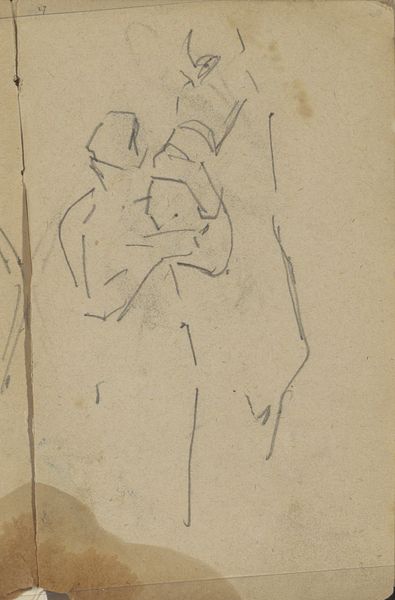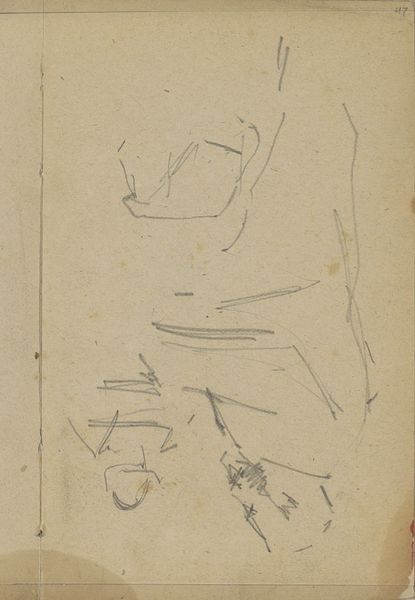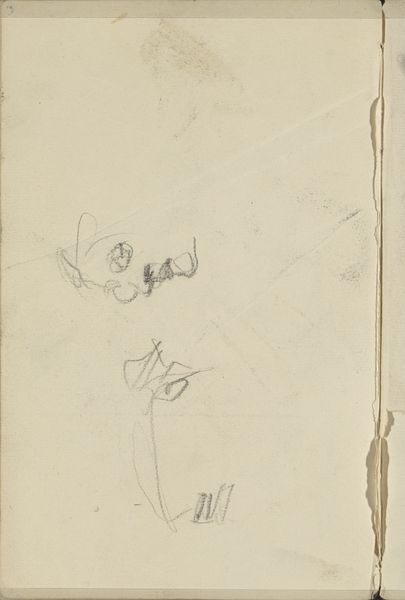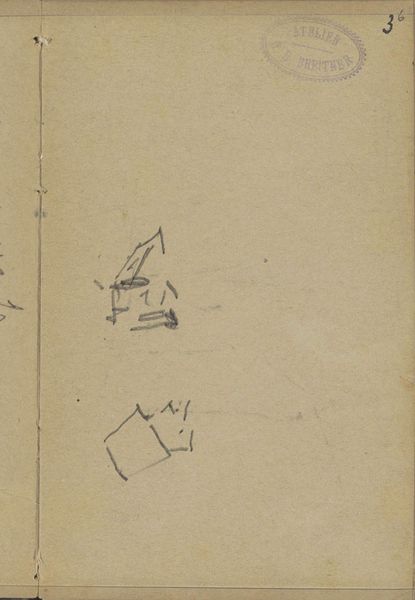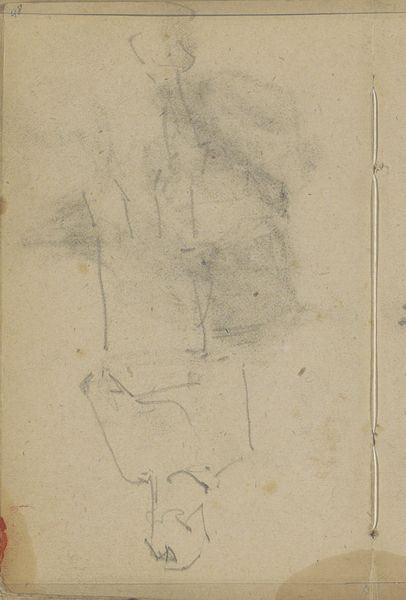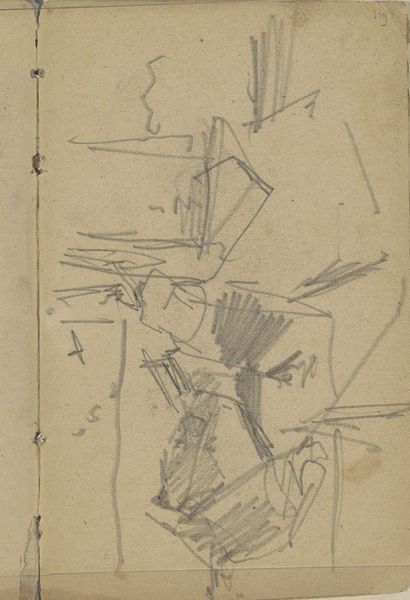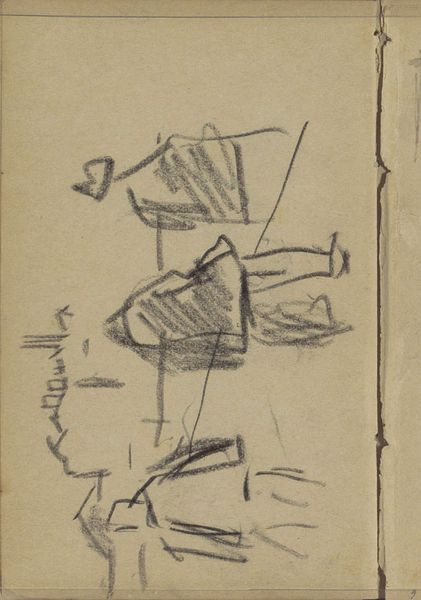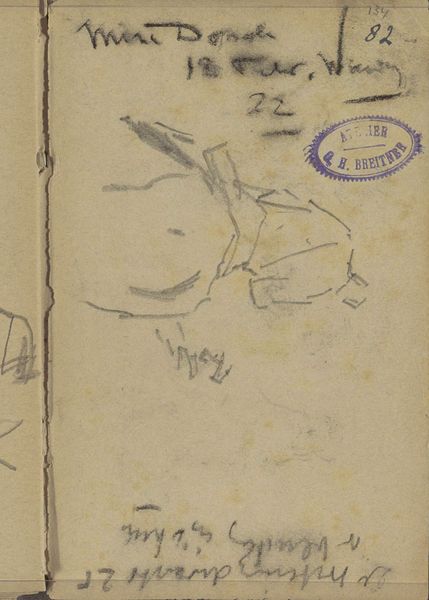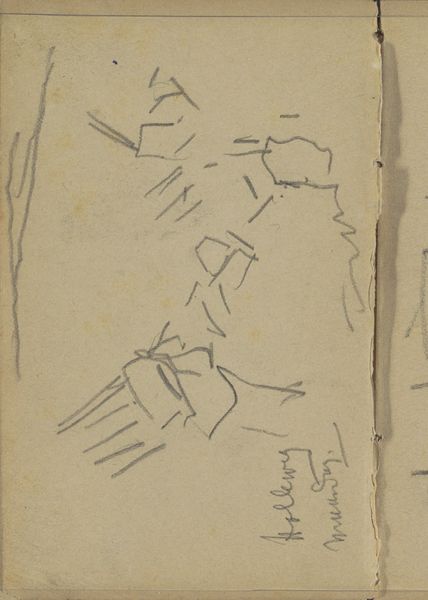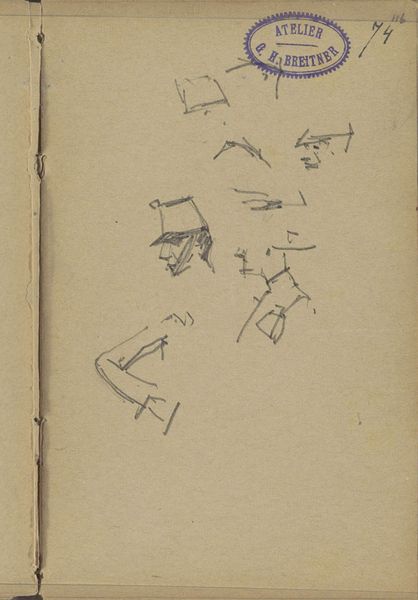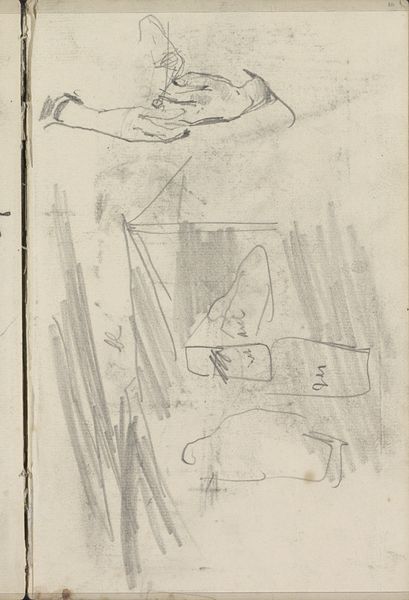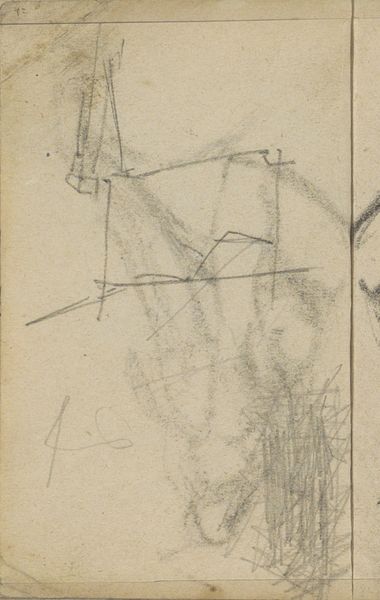
drawing, pencil, graphite
#
portrait
#
drawing
#
impressionism
#
figuration
#
pencil
#
graphite
Copyright: Rijks Museum: Open Domain
Curator: This is “Figuurstudies,” or “Figure Studies,” a drawing done between 1887 and 1891 by George Hendrik Breitner, here in the Rijksmuseum. Editor: Raw and fleeting, isn't it? Just graphite on paper, almost ephemeral. It feels like capturing movement or thought right as it appears. Curator: Absolutely. Breitner was deeply invested in capturing the everyday life of Amsterdam, and his studies often feel like glimpses into those transient moments. Consider how the urban environment shaped his aesthetic; he wanted to capture the dynamism of modern life. Editor: Yes, you really feel the handmade aspect of this work; Breitner’s engagement with material suggests he saw drawing as fundamental labor. There is such intimacy in the way it lays bare his working method. Curator: It’s fascinating to consider these studies in the context of Impressionism. While known for his paintings, Breitner was a skilled draughtsman, and this offers a rare look at his process of observing and recording his surroundings. The politics of the sketch as its own art form are in play. Editor: True, you can almost imagine the sounds of the city, the feel of the paper under his hand as he’s creating. But it's more than just documentary; he actively selected what to portray, which makes the statement about the realities of the world around him. Curator: Precisely, the incomplete nature of these figures also speaks to a rejection of traditional academic art and the construction of the ideal figure. Editor: And that very conscious choice in materials underscores the idea of art not just as a refined skill, but a conscious application of work with a direct connection to real experiences. Curator: I'd agree. It invites us to contemplate the nature of artistic representation and Breitner's place within the changing artistic and social landscape of the Netherlands at the end of the 19th century. Editor: Well, for me, it has ignited a deeper respect for preliminary works, showing that the creative process carries as much social and cultural importance as any "finished" work of art.
Comments
No comments
Be the first to comment and join the conversation on the ultimate creative platform.
